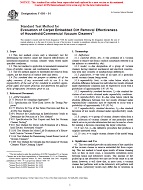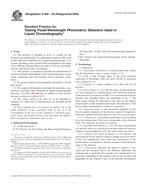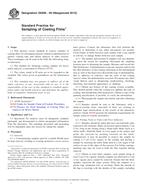1.1 This guide covers corrosion resistant metallic alloys of the general class stainless steel, containing chromium, nickel, manganese, and silicon as major alloying additions and possibly molybdenum, that are qualified or specified for the materials of components used in high-purity gas supply systems for the semiconductor industry. This guide is primarily intended for testing to determine conformance to applicable composition and metallurgical specifications as stated in supplier product specifications or customer purchase specifications, or both.
1.2 Elements analyzed and reported in this guide are as follows:
1.2.1 The alloying additions chromium, nickel, and molybdenum (if specified in alloy, as in type 316L),
1.2.2 The minor elements and residuals manganese, silicon, copper, cobalt, and stabilizers such as titanium and columbium (niobium), if present,
1.2.3 Carbon, sulfur and phosphorus,
1.2.4 Nitrogen and oxygen gases,
1.2.5 Any additional minor element additions that may be made as part of the melting and casting practice, such as aluminum and calcium, and
1.2.6 Available standard analytical and reporting techniques are described for these elements.
1.3 Metallurgical characteristics to be analyzed and reported are inclusion contents, grain structure, mechanical properties, and intergranular corrosion susceptibility.
1.4 Limitations:
1.4.1 This guide is limited to corrosion resistant metal alloys of the general class stated in the Scope.
1.4.2 The test methods cited in this guide are not intended to preclude the use of other generally accepted techniques of demonstrated equivalent or superior precision and bias.
1.4.3 Inclusion of testing and analysis procedures for any given element or metallurgical characteristic in this guide is not to be construed as being a requirement for incorporation of that element or metallurgical characteristic into any specifications.
1.5 The values stated in SI units are to be regarded as the standard. The inch-pound units given in parentheses are for information only.
1.6 This standard does not purport to address all of the safety problems, if any, associated with its use. It is the responsibility of the user of this standard to establish appropriate safety and health practices and determine the applicability of regulatory limitations prior to use.
Product Details
- Published:
- 06/10/1999
- Number of Pages:
- 4
- File Size:
- 1 file , 60 KB


